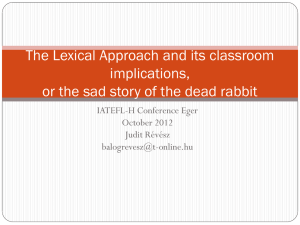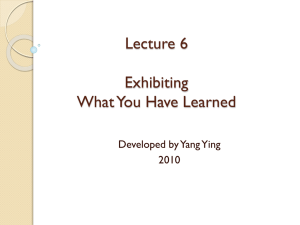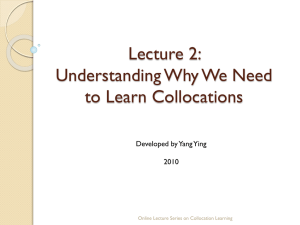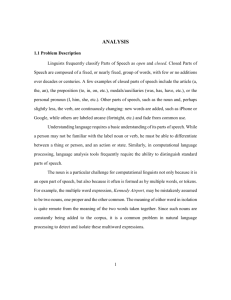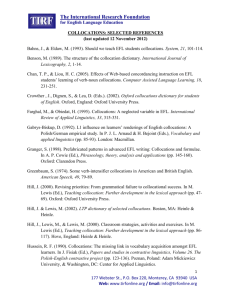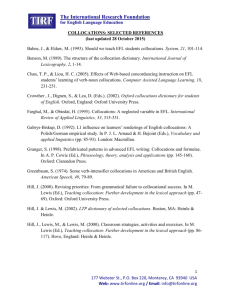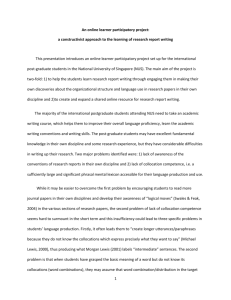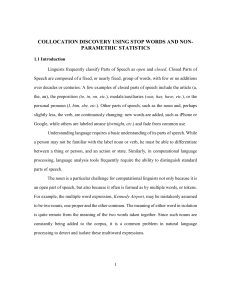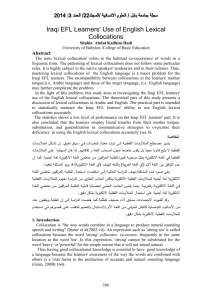Source: El Haj Ahmed, M. (2009) Lexical, Cultural and Grammatical
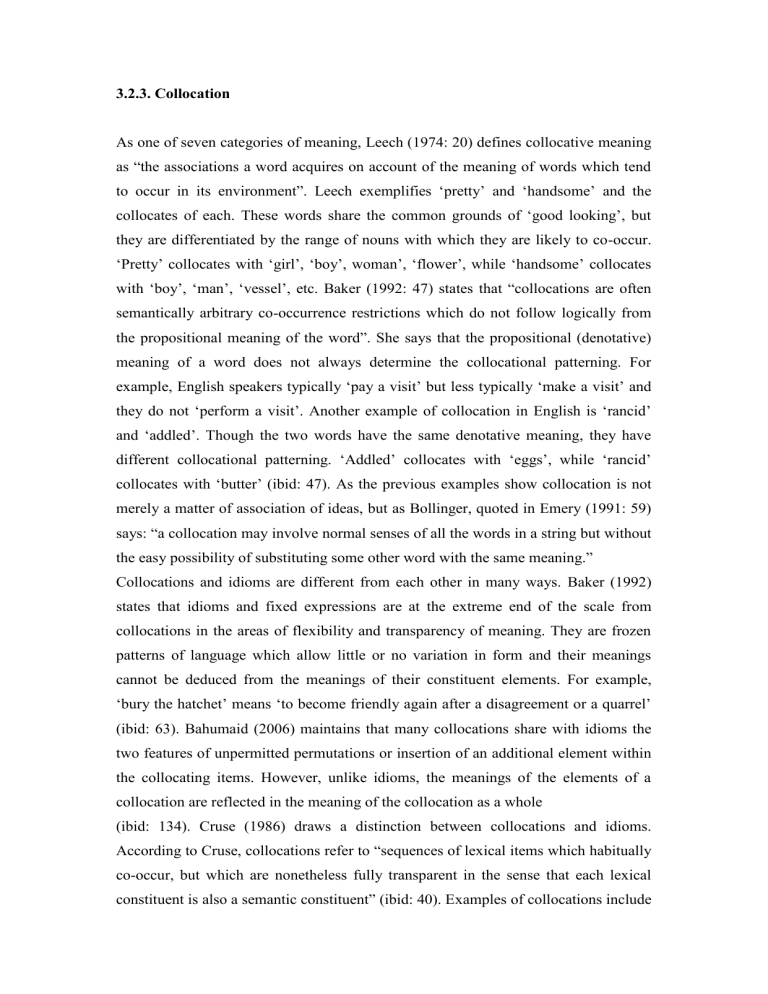
3.2.3. Collocation
As one of seven categories of meaning, Leech (1974: 20) defines collocative meaning as “the associations a word acquires on account of the meaning of words which tend to occur in its environment”. Leech exemplifies ‘pretty’ and ‘handsome’ and the collocates of each. These words share the common grounds of ‘good looking’, but they are differentiated by the range of nouns with which they are likely to co-occur.
‘Pretty’ collocates with ‘girl’, ‘boy’, woman’, ‘flower’, while ‘handsome’ collocates with ‘boy’, ‘man’, ‘vessel’, etc. Baker (1992: 47) states that “collocations are often semantically arbitrary co-occurrence restrictions which do not follow logically from the propositional meaning of the word”. She says that the propositional (denotative) meaning of a word does not always determine the collocational patterning. For example, English speakers typically ‘pay a visit’ but less typically ‘make a visit’ and they do not ‘perform a visit’. Another example of collocation in English is ‘rancid’ and ‘addled’. Though the two words have the same denotative meaning, they have different collocational patterning. ‘Addled’ collocates with ‘eggs’, while ‘rancid’ collocates with ‘butter’ (ibid: 47). As the previous examples show collocation is not merely a matter of association of ideas, but as Bollinger, quoted in Emery (1991: 59) says: “a collocation may involve normal senses of all the words in a string but without the easy possibility of substituting some other word with the same meaning.”
Collocations and idioms are different from each other in many ways. Baker (1992) states that idioms and fixed expressions are at the extreme end of the scale from collocations in the areas of flexibility and transparency of meaning. They are frozen patterns of language which allow little or no variation in form and their meanings cannot be deduced from the meanings of their constituent elements. For example,
‘bury the hatchet’ means ‘to become friendly again after a disagreement or a quarrel’
(ibid: 63). Bahumaid (2006) maintains that many collocations share with idioms the two features of unpermitted permutations or insertion of an additional element within the collocating items. However, unlike idioms, the meanings of the elements of a collocation are reflected in the meaning of the collocation as a whole
(ibid: 134). Cruse (1986) draws a distinction between collocations and idioms.
According to Cruse, collocations refer to “sequences of lexical items which habitually co-occur, but which are nonetheless fully transparent in the sense that each lexical constituent is also a semantic constituent” (ibid: 40). Examples of collocations include
‘fine weather’, ‘torrential rain’, ‘light drizzle’, and ‘high winds’. Cruse maintains that collocations have a kind of semantic cohesion where the constituent elements are mutually selective, adding that “the semantic cohesion of a collocation is the more marked if the meaning carried by one or more of its constituent elements is highly restricted contextually, and different from its meaning in more neutral contexts” (ibid:
40). For instance, the word ‘heavy’ in ‘a heavy drinker’, ‘a heavy smoker’, and ‘heavy on petrol’ requires fairly narrowly defined contextual conditions which requires the selection of the notion of ‘consumption’ in the immediate environment. On the other hand, idioms are characterized by lexical complexity, i.e. they consist of more than one single lexical constituent, and single minimal signification, i.e. they have single minimal semantic constituents. A minimal semantic constituent is indivisible into semantic constituents. Therefore, expressions like to ‘pull someone’s leg’, ‘to have a bee in one’s bonnet’, ‘to kick the bucket’, and ‘to cook someone’s goose’ are examples of idioms (ibid: 37).
Collocations differ from one language into another. According to Baker (1992: 49)
English and Arabic use different collocational patterns that reflect the preferences of each community for certain modes of expression and certain linguistic configurations.
For example, the English ‘deliver’ collocates with ‘letter’, ‘speech’, ‘news’, ‘blow’,
‘verdict’, ‘a baby’. Arabic, on the other hand, uses different verbs, as shown in the following examples:
English Collocation deliver a letter/telegram deliver a speech/lecture deliver news deliver a blow deliver a verdict deliver a baby
Arabic equivalent
افار غلت \
ةرضاحم
اباطخ ملسي
\ ةبطخ يقلي
ا رابخأ لقني
ةبرض هجوي
امكح ردصي
ةأرما دلوي
Table 7: A set of collocations in English and Arabic
In the following set of collocations the English ‘catch’ collocates with ‘fish’, ‘cold’,
‘train’, ‘fire’. Arabic, on the other hand, uses different verbs, as shown in the following examples:
English Collocation catch a fish catch a cold catch a train catch fire
Arabic equivalent
ةكمس داطصي
د رب ةلزنب باصي
راطقلاب قحلي
رانلا هيف لعتشت
Table 8: A set of collocations in English and Arabic
The previous examples of collocations show that English and Arabic use different collocational patterning. In Zughoul’s (1991: 52) own words: “what collocates in one language does not necessarily collocate in another”.
Baker (1992) maintains that collocations are a direct reflection of the material, social, or moral environment in which they occur. For example, the English collocation ‘law and order’ reflects the high value that English speakers place on order, while a typical collocation in Arabic ديلاقتلاو نوناقلا ‘law and convention/tradition’ reflects the high respect accorded by Arabs to the concept of tradition. According to Dickins et al
(2002: 71) the two languages also have different collocations in the use of conjoined phrases. For instance, the English equivalent of دولا لهأ و ذوفنلا باحصأ would be ‘the rich and powerful’, rather than ‘the powerful and rich”, while the collocation همد نم
همحلو is equivalent to ‘his own flesh and blood “, rather than ‘his own blood and flesh’. Other examples include ‘life and death’ ةايحلاو توملا and ‘day and night’ راهن ليل
.
Collocations constitute a major problem for translators. As Newmark (1988:180) maintains “The translator will be caught every time, not by his grammar, which is probably suspiciously ‘better’ than an educated native’s, not by his vocabulary, which may well be wider, but by his unacceptable or improbable collocations”. In translating from English into Arabic or vice versa the translator faces the difficult task of finding appropriate collocations in the target language, as he is dealing with two languages that are linguistically and culturally distinct. Therefore, the translator should pay considerable attention to the collocational differences between the two languages in order to choose the appropriate collocation in the target language. A translator who renders ‘shake hands’ as يديلأازهي would give an erroneous translation. The Arabic equivalent for the English collocation ‘shake hands’ is حفاصي, which is not a collocation in Arabic.
Source
:
El Haj Ahmed, M. (2009 ) Lexical, Cultural and Grammatical Translation
Problems Encountered By Senior Palestinian EFL Learners at the Islamic University
of Gaza, Palestine, Unpublished PhD Thesis , University of Salford


